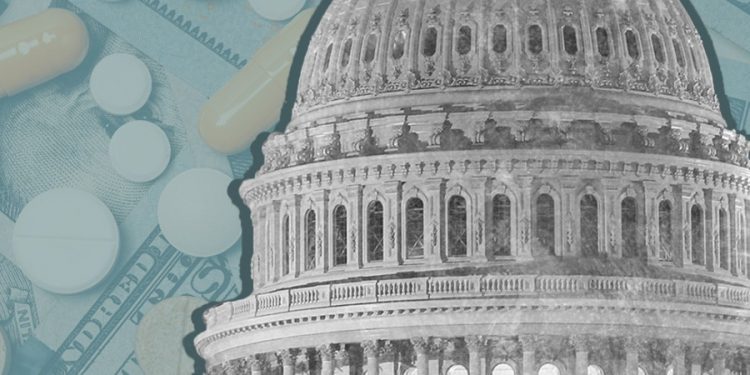You may soon be able to get a taste of meat that was grown in a lab. The FDA has approved lab-grown meat for human consumption for the first time.
Today in health, we look at a new bipartisan bill that two senators are hoping to pass before the end of the year that could dramatically lower monthly prescription drug costs for Medicare Part D enrollees.
Welcome to Overnight Health Care, where we’re following the latest moves on policy and news affecting your health. For The Hill, we’re Nathaniel Weixel and Joseph Choi. Someone forward you this newsletter?
Bill would lower Rx costs for some seniors
Sens. Tom Carper (D-Del.) and Bill Cassidy (R-La.) on Wednesday introduced a bill that would allow people enrolled in the Program of All-Inclusive Care for the Elderly (PACE) to choose their prescription drug plan under Medicare Part D and save more in monthly medication costs.
PACE is a Medicare/Medicaid program that provides medical and social services through a team of health care professionals that enrollees have regular access to, with the aim of avoiding placement in a nursing home
The issue at hand: PACE enrollees are currently required to get their Medicare Part D-covered medications through the program. Joining another Medicare prescription drug plan means being unenrolled from PACE benefits.
Carper and Cassidy’s bill, the PACE Part D Choice Act, would allow PACE beneficiaries to enroll in stand-alone prescription drug plans not operated through the program. This would also make beneficiaries eligible for prescription drug plans subject to the $2,000 annual cap that was instituted by the Inflation Reduction Act earlier this year.
“PACE participants in Delaware and across our nation are dealing with rising prescription drug costs every time they need a refill for their live-saving medications. It makes no sense that these older Americans cannot choose which Medicare Part D plan makes the most financial sense for them,” Carper said in a statement.
The legislation, if passed, would require that PACE inform beneficiaries of their options for prescription drug plans outside of the program and help facilitate enrollment.
Under the current rules, PACE beneficiaries have an average monthly premium of $1,015.03, according to the lawmakers. The senators estimated their bill would save PACE participants an average of $972.03 a month on prescription drugs, resulting in an average monthly payment of $43.
Read more here.
Coalition calls for increased CDC oversight
The Health Innovation Alliance on Tuesday called on congressional leadership to pass legislation that would increase accountability for the Centers for Disease Control and Prevention (CDC) and other public health agencies.
“Not only has the CDC been provided an extensive amount of additional funding for COVID-19 response, but the agency failed to update and modernize its response plans and systems as required by Congress in 2006, and again twice since then,” the group’s Executive Director Joel White wrote in a letter addressed to top lawmakers.
White urged Congress to “ensure that the CDC is not using the additional funding to duplicate successful work already occurring in the private sector” and limit the agency from requiring “unnecessary reporting” from state and local health bodies.
“Rather, CDC should focus on taking actionable steps to ensure data is flowing both up to the agency but also back to the providers, front-line health workers, and public health entities that need it for treatment and response,” White added.
The CDC has faced intense scrutiny amid the COVID-19 pandemic, receiving criticism for slow responses and unclear guidance, among other missteps.
Following a sweeping internal review, CDC Director Rochelle Walensky said earlier this year that the agency needs to speed up its response time, simplify its public-facing communication and enact other changes to make sure it is fulfilling its mission.
Read more here.
FDA WARNS AGAINST PRODUCTS THAT LOOK LIKE TOYS, TARGET KIDS
The Food and Drug Administration (FDA) warned several e-cigarette companies on Wednesday to stop selling vapes and other products that look like toys and appeal to children.
The FDA told the five companies — Wizman Limited, Shenzhen Fumot Technology, Shenzhen Quawins Technology, Ruthless Vapor and Moti Global — to stop selling e-cigarettes designed to look like items such as glow sticks, Nintendo Game Boys and walkie-talkies, or to imitate foods such as popsicles.
“The designs of these products are an utterly flagrant attempt to target kids,” said Brian King, the director of the FDA’s Center for Tobacco Products in a statement. “It’s a hard sell to suggest that adults using e-cigarettes with the goal of quitting smoking need a cartoon character emblazoned across the front of the product in order to do so successfully.”
But it’s not clear what kind of impact FDA warning letters have on compliance.
Wizman previously received a warning letter in 2020 over its product that imitated the Nintendo Game Boy — one of the same products Wizman was chastised for again in Wednesday’s letter.
Read more here.
1B AT RISK OF HEARING LOSS FROM DEVICES, LOUD VENUES: STUDY
According to new research published in the journal BMJ Public Health, compiled with findings from over 30 different studies, as many as 1.35 billion teens and young adults around the world are potentially at risk of hearing loss due to exposure to headphones, earbuds, and loud music venues like clubs or concerts.
All studies were published between 2000 and 2021 and included individuals between the ages 12 and 34.
The results point to “an urgent need to prioritize policy focused on safe listening,” authors wrote, noting recreational noise exposure is a modifiable risk factor for hearing loss.
Findings also come one month after the United States permitted hearing aids to be sold over-the-counter at retailers like Walgreens, Walmart, and CVS.
Acceptable volumes for personal listening devices are around 80 decibels (dB) for adults and 75 dB for children. However, some users can choose to listen to content as loud as 105 dB. Meanwhile, the average sound levels at entertainment venues range from 104 to 112 dB, researchers said.
Read more here.
Transgender Americans facing ‘epidemic of violence’
At least 32 transgender and gender-nonconforming people have been killed since the beginning of the year, the Human Rights Campaign (HRC) reported Wednesday, bringing the number of violent deaths recorded by the group over the last decade to more than 300.
At least 302 transgender individuals have been killed in the U.S. since 2013, when the FBI began reporting hate crimes motivated by anti-transgender bias, the HRC said Wednesday in an annual report.
More than 85 percent of victims tracked by the group over the last decade have been people of color, including roughly 69 percent who were Black and
15 percent who were Latino. More than three-quarters, or 77 percent, were younger than 35.
At least two-thirds of violent deaths of transgender people recorded since 2013 involved a firearm, according to the HRC report. Gun control group Everytown for Gun Safety recently found that 73 percent of transgender homicides since 2017 involved a firearm.
Wednesday’s report also comes at the tail end of a year during which state lawmakers introduced at least 145 bills seeking to restrict the rights of transgender youth. At least 17 have become law across 13 states, according to HRC.
The release of Wednesday’s HRC report coincides with Transgender Awareness Week, observed each year beginning Nov. 13 and leading up to Transgender Day of Remembrance on Nov. 20, which memorializes victims of fatal violence.
Read more here.
WHAT WE’RE READING
Amid the Adderall shortage, people with A.D.H.D. face withdrawal and despair (New York Times)
Pediatricians beg for more federal help to fight wave of RSV (Roll Call)
Covid deaths and hospitalizations are falling in the U.S. (NBC News)
STATE BY STATE
South Dakota passed Medicaid expansion. What’s next? (PBS NewsHour)
Fight over health care minimum wage yields a split decision in Southern California (California Healthline)
The abortion election: Democrats banked on abortion policy to win the midterms. It worked. (The Cap Times)
THE HILL OP-ED
An unexpected winner in the midterms: public health
That’s it for today, thanks for reading. Check out The Hill’s Health Care page for the latest news and coverage. See you tomorrow.















